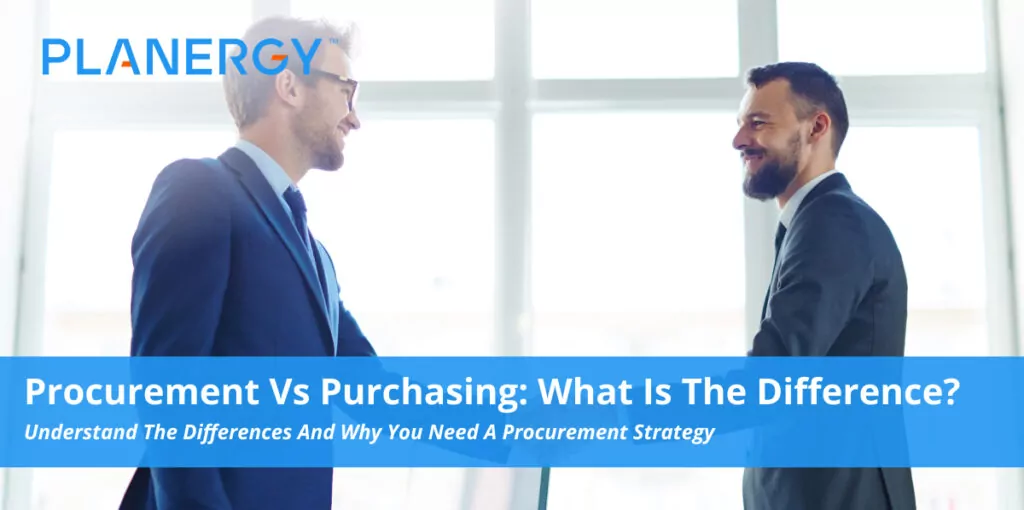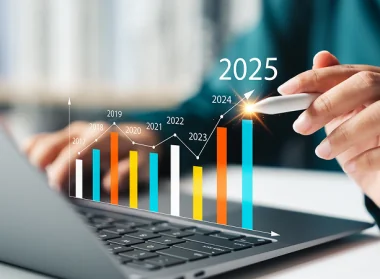The terms ‘purchasing’ and ‘procurement’ are often used interchangeably, but in reality, they don’t mean the same thing. One is the act of purchasing goods and services, the other is a strategy for ensuring value and meeting business goals.
Knowing the difference can make an impact on the long-term success of your business.
In this article, we’ll examine what purchasing and procurement actually mean, the differences between the two, and how you can boost efficiency in your purchasing and procurement processes.
What Is Purchasing?
Purchasing is the act of buying of goods or services. It’s a short set of processes an organization goes through to purchase the goods and services they need. Generally, purchasing is seen as a subset of procurement and focuses purely on short-term goals.
Some organizations only follow a policy of purchasing reactively and do not carry out broader and more strategic procurement activities. That’s usually because they’re a smaller business that hasn’t yet built the capabilities to conduct the more complex processes of procurement.
However, that also means they’re forgoing the benefits of practices like building supplier relationships and strategic sourcing. They’re just focusing on the nuts and bolts of purchasing.
The purchasing process consists of the following:
Purchase Request
For some small businesses, this step might be as simple as calling their preferred vendor and placing an order on the fly.
But for most small-to-midsize organizations will have a purchase order process in place.
A purchase requisition will be created that states what is needed. That requisition then needs to get approved by the proper parties following the company’s purchase order policy.
After that, they create a purchase order (PO) for their preferred supplier that includes the quantity, line items, and other details the supplier needs.
Supplier Communication
Once they receive the PO, the supplier will respond with a confirmation. They may also give tracking information so the business can stay up to date with order fulfillment.
Receiving the Order
The supplier then delivers the goods or services ordered. In purchasing, an official receipt of delivery is recorded. Ideally, the organization has a protocol for officially receiving purchases and does some sort of audit to ensure that what was delivered matches what was purchased (but that’s not always the case).
Receiving the Invoice
The supplier also sends an invoice for the goods and services delivered. Without a full procurement process in place, this invoice is usually sent to accounts payable for a manual (and time-consuming) confirmation that the invoice matches the order.
Payment
In purchasing-only organizations, payment is usually a straightforward process of paying the invoice, often by a mailed check. This often overlooks safeguard processes like 3-way matching to ensure that the receipt of goods matches the invoice and the purchase order.
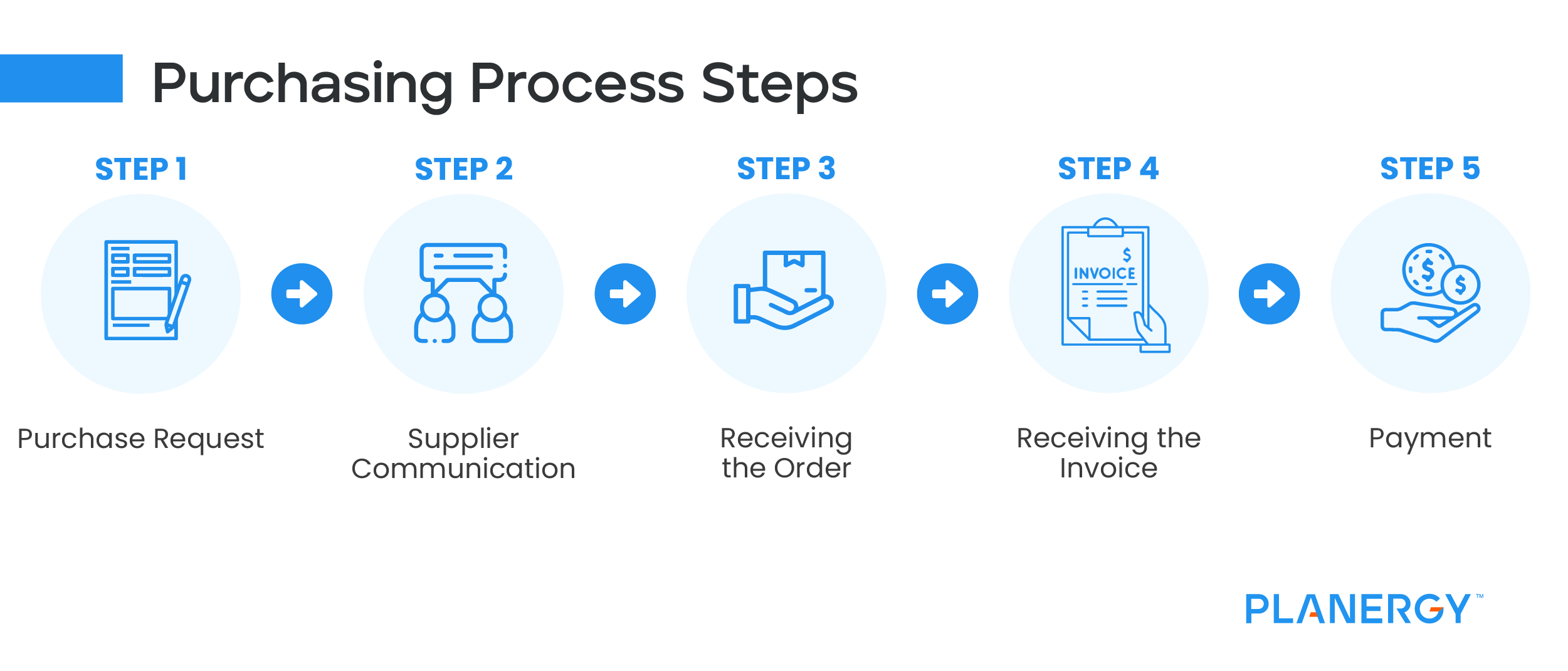
For a growing business, purchasing without a procurement strategy can negatively impact the bottom line. Lack of control, rules, supplier relationship management, and metrics leaves companies vulnerable to fraud and overpayment.
Graduating to a well-defined procure-to-pay (P2P) process helps minimize spend, even for a small business.
What Is Procurement?
Procurement is the combined strategic processes involved in obtaining goods or services to fulfill business objectives in an organized and cost effective fashion.
Procurement is a more comprehensive set of processes than purchasing. It encompasses supply chain management strategies for sourcing, negotiating contracts, delivery timelines, and quality control. The ultimate goals of procurement are cost savings, spend control, and workflow efficiency.
Where a purchasing decision may include simple considerations such as price, delivery, and convenience, procurement decisions are made based on strategic plans that consider the total cost of ownership and other internal needs.
Procurement strategies consider the following:
Business Ethics
Consumers expect businesses to meet certain standards. Distasteful stories of sweatshops or destructive mining processes sweep social media like wildfire, burning trust in their wake. Procurement professionals ensure that materials are sourced in ethical, legal, and customer-approved ways applying the companies ESG in procurement.
Logistics
When mapping out an efficient supply chain, procurement departments consider logistical factors like optimal delivery methods, time, cost, taxes, tariffs, and risk. They figure out the most cost-effective ways to get the goods and services they need.
Quality
In certain industries, quality is the single most important consideration. Building projects and food products are examples of industries where cutting quality can be dangerous. Procurement strategy includes identifying the best quality at the best price.
Supplier Capability
Procurement departments make sure that suppliers are capable of delivering the quantity needed consistently and on time. Strategic sourcing includes keeping potential suppliers in mind for when preferred suppliers can’t deliver because of temporary setbacks, natural disasters, or going out of business.
Vendor Relationships
Procurement specialists focus on maintaining good relationships with vendors to ensure they’re able to take advantage of special offers like preferred pricing and early-payment discounts.
Having a strong relationship with a vendor also means they are more likely to be accommodating when you have an urgent or unexpected requirement.
Cost
The price of raw materials is an issue for every business. Typically, a procurement team uses a tendering or competitive bidding process to request proposals from trusted suppliers and ensure the right price after all other considerations are factored in. Often this will involve locking in a contracted price over a longer period of time to give certainty on costs.
Negotiation
Procurement departments provide enhanced negotiating power. By consolidating spend from all departments, a savvy procurement manager can negotiate better deals based on bulk pricing, and more favorable payment terms.
Spend Control
Procurement strategy identifies spend categories and sets protocols for purchasing based on category, expected purchases, and dollar amounts. Tight control eliminates maverick spending and unapproved purchasing.
Risk Mitigation
Systematic identification, assessment, and strategies to minimize risk contribute significantly to procurement success. Risk management is integral to effective procurement management, particularly for large-scale or geographically diverse businesses.
Establishing Protocols
The procurement function can establish governing rules for automated purchases. This facilitates fast ordering for routine purchases and eliminates bottlenecks by defining the process for goods and services requiring approval.
Accounts Payable
Procurement uses 3-way matching to verify invoices against the purchase order and packing slips. This eliminates duplicate payments, highlights incorrect charges, ensures invoiced items are delivered as promised, and flags invoices for timely payment.
Procurement is a corporate strategy that seeks to streamline operations, optimize for value, and ensure business continuity. These strategies help businesses stay competitive by finding the best deals and getting the goods and services they need as quickly as possible.
Procurement has been proven to create a competitive advantage. A study by IBM showed that high-performing procurement departments report 7.12% profit margins compared to 5.83% for those with low-performing procurement departments.
Procurement is a comprehensive set of strategies and protocols designed to extract value from the procurement cycle and meet long-term goals. Purchasing is merely the end result—the transaction.
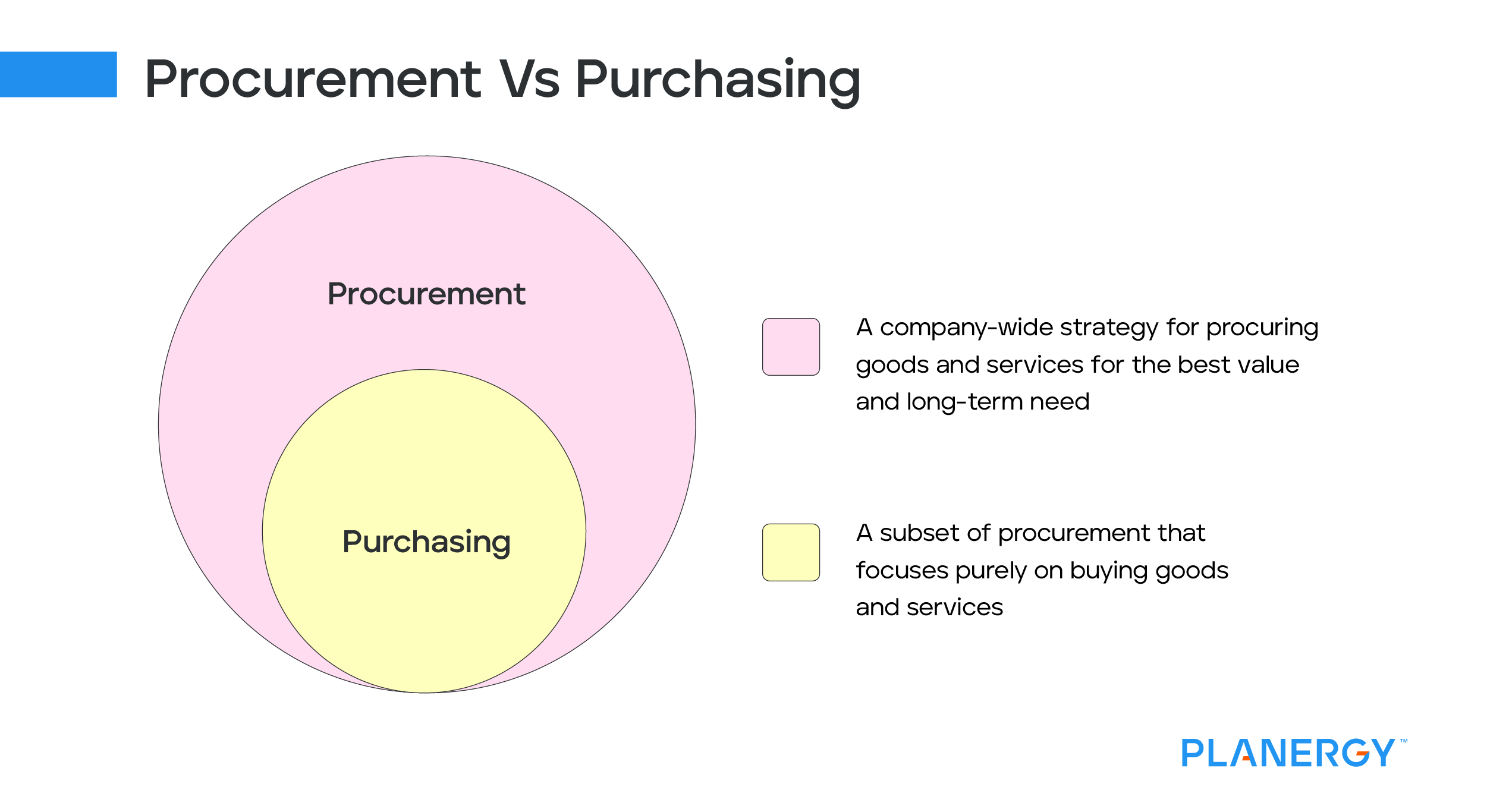
What Are The Differences Between Procurement and Purchasing?
Generally speaking, purchasing is the simple act of making a purchase while procurement is a long-term strategy for making purchasing decisions.
Purchasing begins and ends with the acquisition of goods and services.
Procurement is a detailed design process to make informed buying decisions based on available data.
Procurement continually seeks to optimize and improve supplier relationships, forge connections with stakeholders, and find ways to lower supply chain costs and minimize losses. Purchasing focuses mainly on the current transaction, typically without considering the business as a whole.
Some of the key differences between procurement and purchasing include:
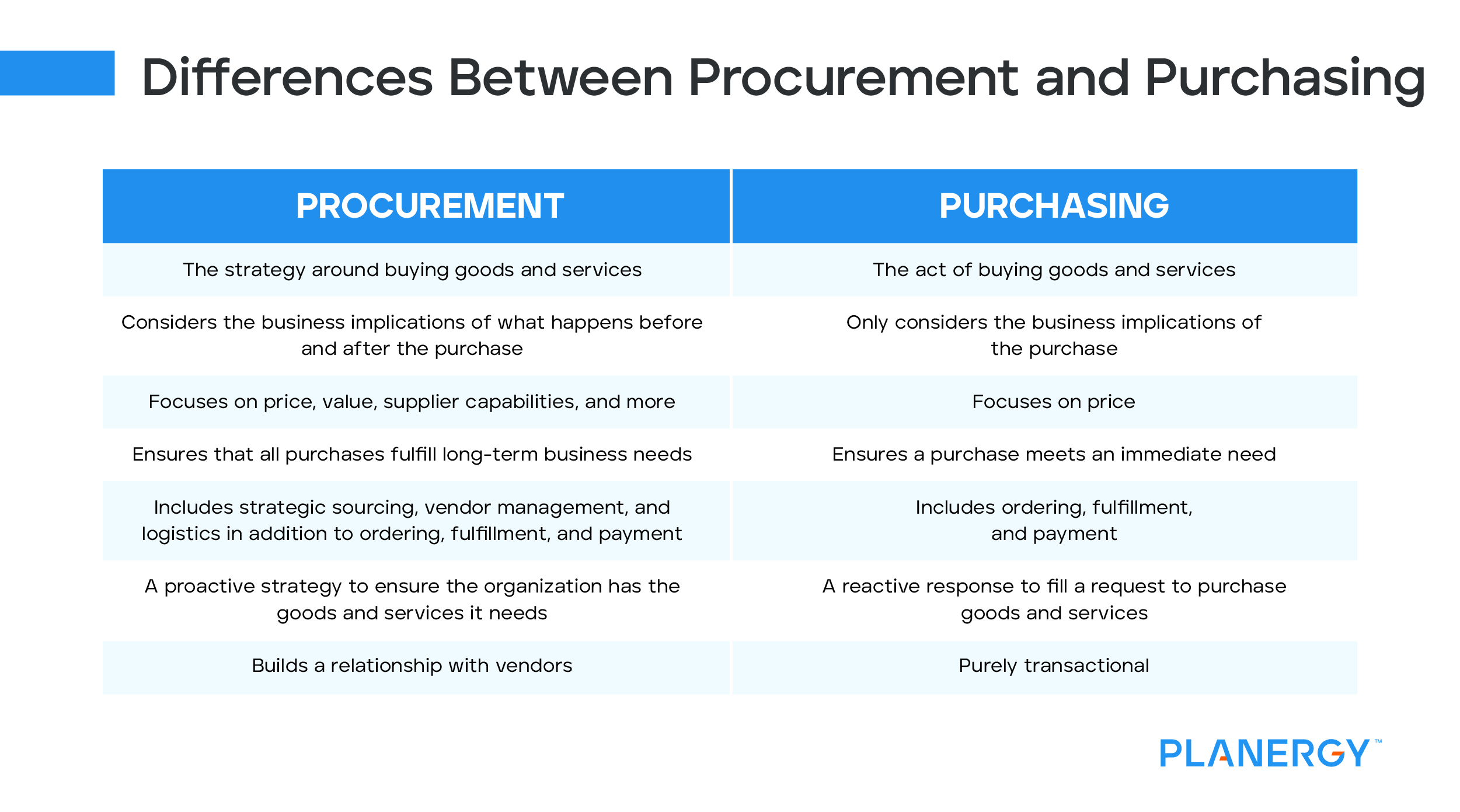
How eProcurement Software Can Help Your Procurement and Purchasing Processes
For some businesses that operate on a smaller scale, it may make sense to stick with simple purchasing practices while they grow. For those that have experienced some growth, it’s highly like that implementing a procurement strategy will help cut costs, increase efficiency, and ensure business continuity.
For those that are purely focused on simple purchasing processes, procurement software like PLANERGY can automate the purchasing process, which is the first step towards greater efficiency.
Purchasing software can reduce paperwork, eliminate bottlenecks, enable faster purchasing cycles, and free up staff for other tasks.
For companies that are ready for procurement strategy, procurement software is essential. It enables your purchasing team to execute their strategy with ease throughout the entire procure-to-pay process, giving them the ability to track spending and find areas for efficiencies.
It also enables them to save time and build better supplier relationships through faster workflows and communication tools.
A 2020 study found that organizations that digitize their supply chain and procurement processes reduce overall procurement costs by 20%—a significant savings that comes from the reduction of time-consuming manual processes and increased visibility.
Whatever strategy you choose for your business, eProcurement software can help you achieve more, cut costs, and unlock value throughout your purchasing or procurement process.

